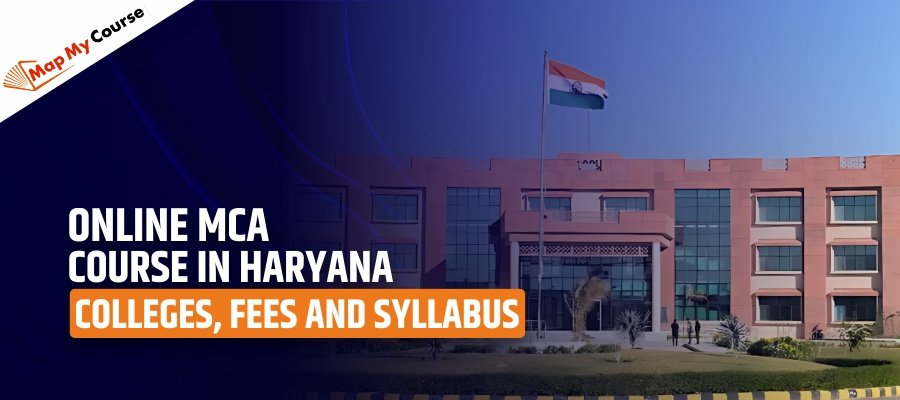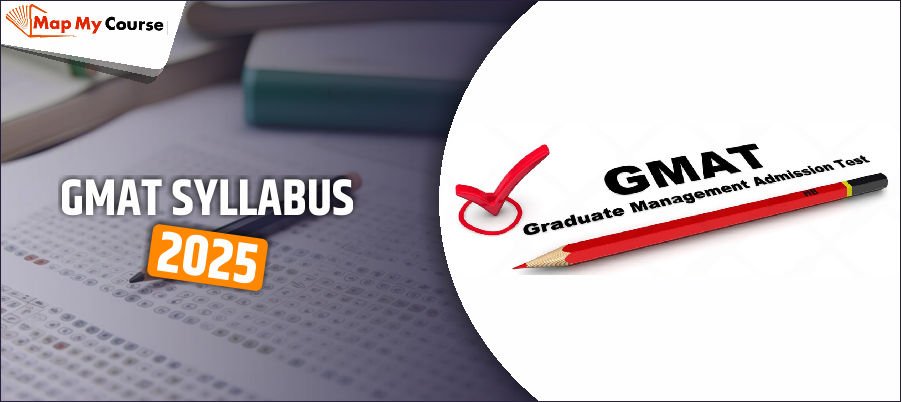Many students enrol in an MBA program every year, just to learn business and management skills, and move their career towards success, and for that, they appear for the entrance exam. There are many popular MBA entrance exams, and GMAT is one of them.
The GMAT exam is easier than other exams like MAT, CAT, and XAT, etc. The GMAT syllabus is divided into 3 sections such as Quantitative Reasoning, Verbal Reasoning, and Data Insights.
If you are also going to appear for the exam, then this blog is what you need before starting your preparation. We are going to cover all about this exam, like CUET syllabus 2025, its exam pattern and preparation tips, etc., so without wasting time, let’s move forward.
What is GMAT Exam?
The Graduate Management Admission Test, or GMAT, is a well-known exam used worldwide to get admission into MBA and other management courses. This exam is conducted by the Graduate Management Admission Council (GMAC) and is accepted by over 2,400 business schools, including top ones like Harvard, Stanford, and London Business School.
The GMAT tests some important skills like analytical thinking, logical reasoning, and verbal abilities. Once a candidate has qualified for the GMAT exam then the score is valid for the next five years, which gives a lot of time to apply to different schools. This exam is conducted throughout the year at authorised test centres worldwide.
GMAT Exam: Overview
Particulars | GMAT |
Full Form | Graduate Management Admission Test |
Conducting Body | Graduate Management Admission Council |
Official Website | |
Accepted by | Indian and Foreign Universities |
Types of Questions | Multiple Choice Questions |
Mode of Exam | Online: either at home or at a test centre |
Exam Frequency | Throughout the year |
Exam Fee | Online: INR 25,290 + Taxes At Test Centers: INR 23,180 + Taxes |
GMAT Syllabus |
|
Duration of Exam | 135 Minutes |
Who Should Take the GMAT in 2025?
- Students aiming for top global MBA programs
If you are a student aiming to apply to international B-schools like Harvard, Cambridge, or INSEAD, then you need to appear for the GMAT. These schools use GMAT scores to evaluate your eligibility for an MBA program.
- Working professionals looking to boost their careers
If you are a working professional with a few years of work experience and you want to boost your managerial skills, then it can be the perfect exam. Because it is easier than other exams like CAT, MAT, and XAT, it becomes very easy for you to prepare for this exam instead of any other.
- Indian applicants targeting business schools that accept the GMAT
Institutes like ISB Hyderabad, SPJIMR Mumbai, and Great Lakes accept GMAT scores for their programs. So, if you’re not interested in taking exams like CAT, XAT, and MAT, the GMAT can be a strong alternative, especially for one-year MBA courses.
- Candidates seeking global exposure and international careers
If your goal is to study abroad, work with multinational companies, or explore career options overseas, the GMAT opens doors to globally recognised programs that offer great networking opportunities and high ROI. This exam assesses the candidates based on international criteria.
How to Register for the GMAT Exam?
Step 1: Create an Account on the Official GMAT Website
You can start with visiting official website of GMAC, there you will need to create an account using your name and email ID, and few basic details, while creating an account, make sure all the details matches with your official ID proof.
Step 2: Choose Your Exam Type
Now you need to select the option in which you want to take the test, it can be online or CBT mode, depending on your preference and availability.
Step 3: Pick a Test Date and Centre
Now select the date of the test according to your schedule in advance to allow enough time for preparation. All the test centres are available in major cities like Delhi, Mumbai, Bengaluru, Chennai and Hyderabad etc.
Step 4: Pay the Registration Fee
After creating the account and selecting all the preferences, you need to pay the exam fees, You can pay it via debit card, credit card or UPI and check your exam slot before confirming the payment.
Step 5: Confirm and Get Ready
Once you’ve registered and paid the exam fees, you will receive a confirmation email with your test details. Keep this safe and start your preparation seriously.
The GMAT Syllabus 2025
The GMAT Syllabus 2025, based on the new Focus Edition, includes three main sections: Quantitative Reasoning, Verbal Reasoning, and Data Insights. Previously, there were 4 sections, but to reduce the burden on the candidates, GMAC has removed the “Analytical Writing Assessment” section.
GMAT Syllabus Structure Explained
Below is the section-wise breakdown of the syllabus:
Section 1: Quantitative Reasoning
This section tests your basic understanding of arithmetic and algebra, and how you use that knowledge to solve problems. It includes 21 Problem-Solving questions.
You don’t need advanced math skills for this—just a good grasp of basic concepts and the ability to think logically. The focus is more on your reasoning than on tough calculations.
The question types you will find in this section are:
- Number Properties
- Arithmetic
- Algebra
- Coordinate Geometry
- Statistics
Section 2: Verbal Reasoning
This section checks how well you understand written information and how you can think through arguments. It has 23 questions from two types: Reading Comprehension and Critical Reasoning.
The question types you will find in this section are:
- Critical Reasoning
- Evaluate the Conclusion
- Complete the Argument
- Strengthen the Argument
- Weaken the Argument/Find the Flaw
- Paradox
- Find the Assumption
- Draw Inference
- Structure of the Argument
- Reading Comprehension
- Application Questions
- Evaluation
- Supporting Idea Questions
- Inference Questions
- Main Idea Questions
Section 3: Data Insights
The Data Insights section tests your ability to understand and analyse data in various formats and apply that understanding to real-world business situations. It also assesses your digital and data literacy skills that are highly valued in today’s business environment.
This section includes 20 questions that may involve interpreting graphs, charts, numbers, and written information.
The question types you will find in this section are:
- Data Sufficiency
- Multi-Source Reasoning
- Table Analysis
- Graphics Interpretation
- Two-Part Analysis
GMAT Exam Pattern
Particulars | Description | |
Sections |
| |
Section Wise Weightage | Quantitative Reasoning | 21 |
Verbal Reasoning | 23 | |
Data Insights | 20 | |
Total Marks | 805 | |
Time Allotted | 135 Minutes | |
Number of Questions | 64 | |
Negative Marking | There is no negative marking | |
Changes in the GMAT Exam Pattern
The GMAT Focus Edition has made the test shorter, now lasting only 2 hours and 15 minutes instead of the earlier 3 hours and 7 minutes. A few more changes have happened, these are as follows:
- The Analytical Writing Assessment (AWA) section has been removed from the exam.
- A new section called Data Insights has been introduced, which focuses on skills like analysing data and solving business problems.
- Candidates now have the freedom to decide which section they want to start with, and they can also review and change their answers within each section before moving on.
- Additionally, there’s an optional 10-minute break that can be taken between any two sections during the exam.
Tips to Prepare for the New GMAT Syllabus in 2025
- Understand the New Format: The first step is to familiarise yourself with the shorter exam structure and the new Data Insights section. Knowing what to expect will reduce surprises on test day.
- Focus on Data Skills: Just because Data Insights is a new and important part of the test, practice its syllabus regularly to sharpen this skill.
- Sharpen Your Reasoning: The Verbal and Quantitative sections focus heavily on reasoning and problem-solving, not just memorising formulas or grammar rules. Practice questions that require logical thinking.
- Consider Best Study Materials: Make sure to use GMAC’s official practice tests and guides. They are designed to match the current exam style and difficulty.
- Time Management: Now focus on improving time management skills, to complete the entire paper on time you can allot section-wise time, this will help you to avoid missing any question.
- Practice previous year questions: You can solve the PYQs and mock tests to check your preparation, with this, you can focus on your week topics.
Take Care of Yourself: Get enough rest before the exam, eat well, and stay hydrated. A fresh mind performs better.
Relatable Blogs
Conclusion
The GMAT Syllabus 2025 has some important changes, especially with the introduction of the Data Insights section and a shorter exam duration. These updates aim to reduce the burden on the candidates and to assess the skills needed in today’s business world, and make the test more efficient.
By understanding the new format and focusing your preparation on reasoning and data analysis, you can approach the exam with confidence. Remember, consistent practice and using the right resources are important to get success. Whether you’re aiming for top business schools in India or abroad, this GMAT exam will open many doors for your career.
FAQs
Q.1 What is the format for the GMAT 2025?
Ans. The 2025 GMAT exam format consists of 3 sections, Quantitative Reasoning, Verbal Reasoning, and Data Insights, each with 45 minutes and 20-23 questions, totaling 64 questions and a total exam time of 2 hours and 15 minutes.
Q.2 Does IIM accept GMAT?
Ans. Yes, IIMs do accept GMAT scores, but primarily for executive programs like PGPX and EPGP, and for certain international MBA programs.
Q.3 Are there any breaks during the exam?
Ans. Yes, optional 10-minute breaks are available between sections, allowing test-takers to rest and recharge before proceeding.
Q.4 Can I choose the order of sections?
Ans. Yes, test-takers can choose the order in which they complete the three sections, allowing for personalised test-taking strategies.
Q.5 How can I manage my time effectively during the GMAT exam?
Ans. Effective time management involves pacing yourself, prioritising questions, and allocating time wisely.


















